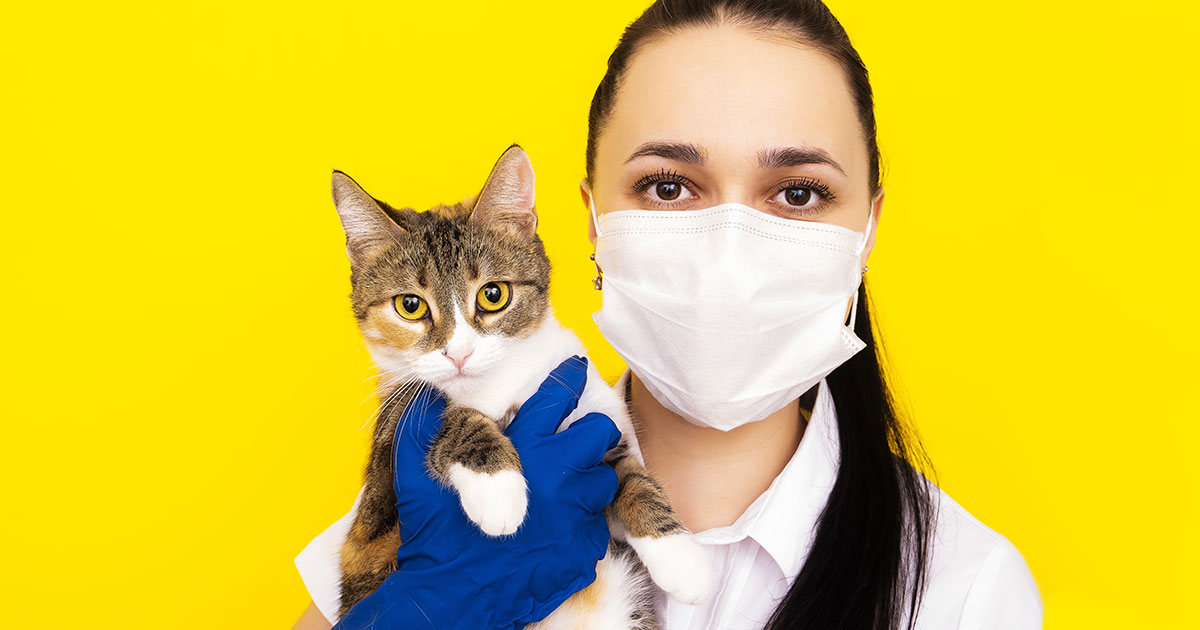During the last lockdown, I wrote about the struggles of working in a veterinary practice through COVID. And while that has changed slightly, it has still been an extremely tough year for all members of staff throughout the profession.
In March, practices up and down the country resorted to emergencies only, and postponed all routine and non-urgent work. Cue the torrent of abuse hurled at receptionists for not being able to book Fluffy in for his monthly nail clip.
Staff were furloughed to save on costs and, in some cases, vets found themselves having to act as receptionists and nurses, too. Our nurses were respected beforehand, but after months of shouting at blood machines, trying to fathom stock orders and generally creating absolute havoc, a new height of appreciation was realised.
Ever onward
The pressure was immense – new ways of working, such as car park consulting or large animal vets working from home, presented new challenges in themselves. Coupled with reduced staff, increase in demand (every man and his dog seemingly bought a pandemic puppy) and general anxiety about the ongoing global health crisis, it has pushed many to the edge of burnout.
But we kept going. In theory, if the pressure was too much, we could request to be furloughed. For some, this just wasn’t an option (due to timing of starting employment, for example). For others, no matter how hard it got, we couldn’t face putting our colleagues under even more pressure.
For large animal or equine vets in particular, any staff shortages would impact out-of-hours rotas – again putting more strain on those left behind.
Catching up
We held on to the hope that things would ease once we were fully staffed, but instead of slowing down, the workload just shifted.
As routine surgeries and appointments started creeping into the diary, we were now playing catch-up. Although perhaps not as mentally draining as lurching back and forth from urgent complex case to emergency, the avalanche of vaccines kept us going at full speed.
For a brief period, I felt like a level of equilibrium was reached – we were still very busy and still ploughing through the backlog of neutering, but we had got used to the car park consult we so detested at the beginning. Now, in most cases, I found it easier as the animals were generally better behaved without their owners, once you overcame the obstacle of them putting the breaks on to come through the door.
New ways of working
Protocols and advice changed almost every day, and we soon found ourselves wearing “full PPE”.
I despair at whoever decided that a plastic apron constituted protection against a highly infectious virus – especially when the first dog you pick up puts its claws straight through it.
Alas, we got on with it, and now, like with so many things that would have seemed alien a year ago, have become accustomed to it.

Version 2.0
When the second lockdown was announced, I had a lingering sinking feeling. Even though I know we got through it last time, the thought of having to work on skeleton staff again filled me with dread. How long could we keep doing this to ourselves?
However, the BVA and RCVS did not reissue the advice from March, and no ban on routine procedures existed. Shielding was no longer recommended except for the critically vulnerable, and many practices opted not to use the furlough scheme this time as all staff were needed to keep up with demand.
There seemed to be a generally more relaxed approach to the second lockdown – schools were open and the roads were as busy as usual, whereas in March they were empty. A local town centre was packed on a sunny November Saturday with people getting takeaway coffees and visiting “essential” shops (yes, chocolate may be a necessity for many of us during these desperate times, but I really question whether a high-end chocolate shop is essential to the same degree as a supermarket).
This lackadaisical attitude soon resulted in the inevitable consequence: the COVID cases in Hull shot up until we soon had the highest infection rate in the country.
Try, try again
We altered our working patterns again, with large animal vets being particularly careful to have periods of working from home to minimise contact with other practice staff to protect the ability to provide a large animal emergency service.
With some neighbouring practices having recently ceased their large animal services (another reason our workload had increased), I feared that, should we all find ourselves in a position of having to isolate, no out-of-hours cover would exist for our farmers.
Inevitably, some of our staff were affected by Track and Trace or illness, and despite all our precautions, we were desperately thin on the ground again. Those holding the fort worked longer hours or through days off – a necessity to keep things ticking over while allowing the genuinely ill to isolate and recover.
COVID fallout
The strangest thing about this virus is that, aside from the pathognomonic loss of smell and/or taste, the effects on individuals are so variable. As we have all been told, some us have likely been infected and not shown any symptoms at all. At the opposite end of the scale, some patients are hospitalised in intensive care, and a wide range seems to exist between these two extremes.
Chronic fatigue, however, does seem relatively common, and so a lot of sufferers, in any sector of work, return on reduced hours. This is another lasting factor that is likely to impact staff levels throughout the profession.
Thankfully, there does seem to be light at the end of the tunnel with the recent vaccine news, but how quickly this might realistically impact our working lives remains to be seen – especially as a large proportion of the veterinary workforce are unlikely to be first in line to receive vaccination.
We will have to keep ploughing through, supporting each other where we can.

Leave a Reply